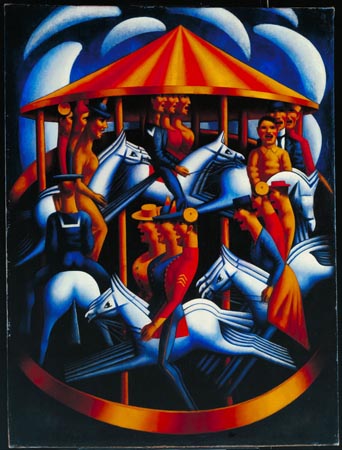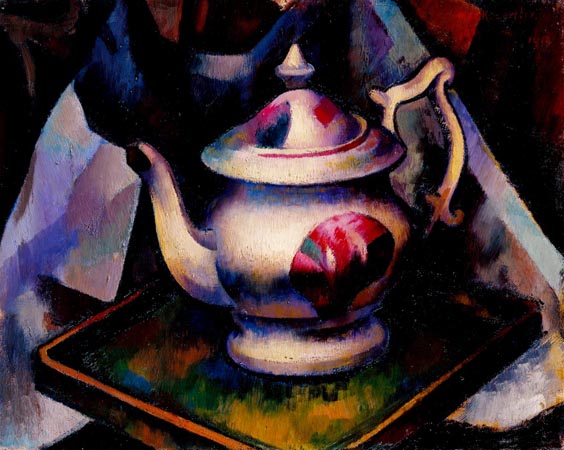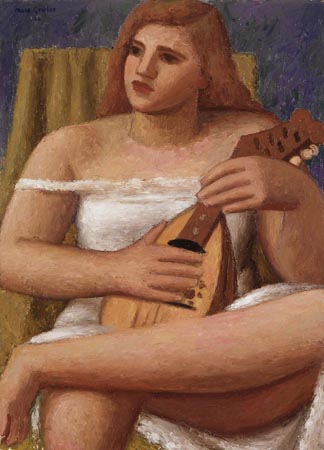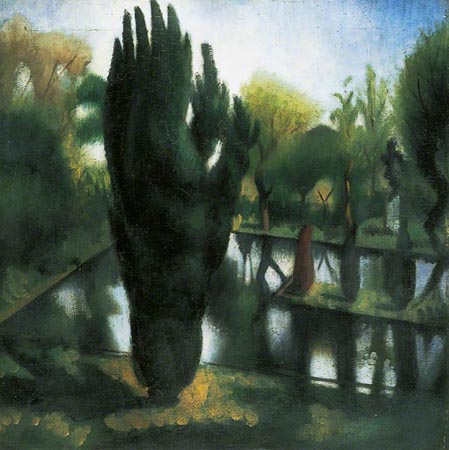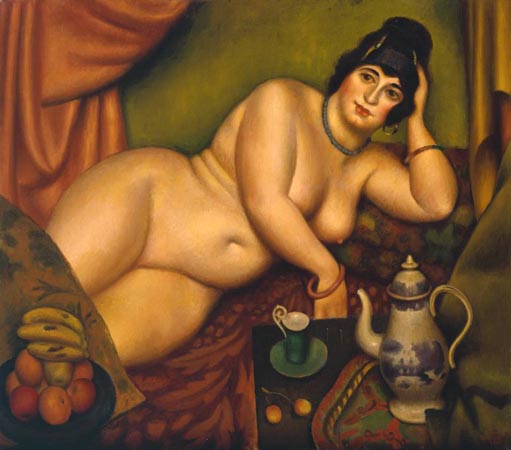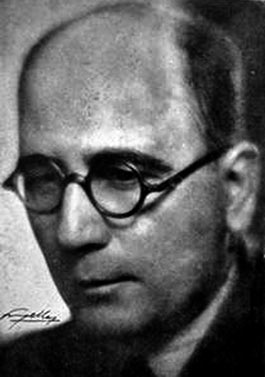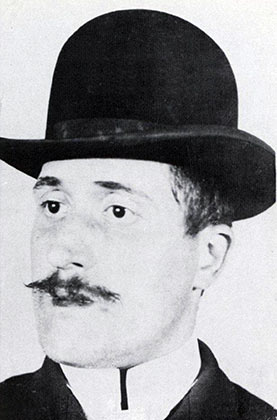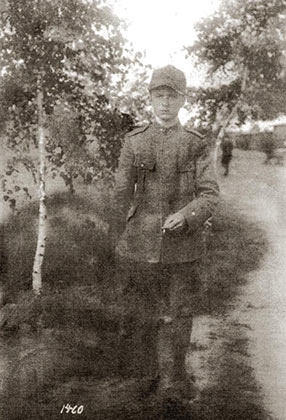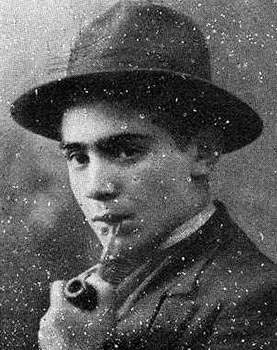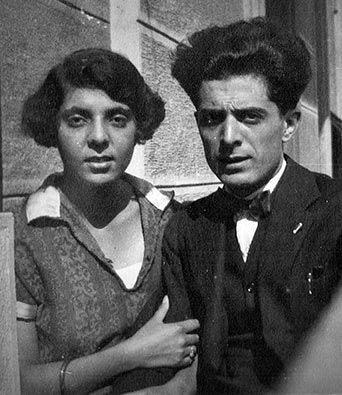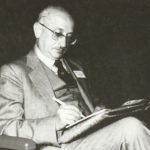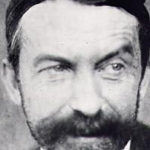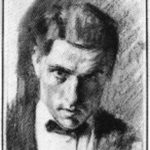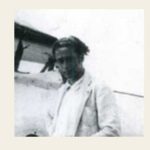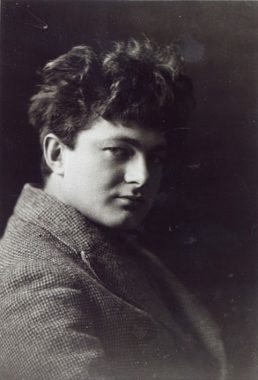
Gertler Mark
(English)
Mark Gertler (9 December 1891 – 23 June 1939), born Marks Gertler, was a British painter of figure subjects, portraits and still-life.
His early life and his relationship with Dora Carrington were the inspiration for Gilbert Cannan’s novel Mendel. The characters of Loerke in D. H. Lawrence’s Women in Love and Gombauld in Aldous Huxley’s Crome Yellow were based on him.
Life
Marks Gertler was born on 9 December 1891 in Spitalfields, London, the youngest child of Polish Jewish immigrants, Louis Gertler and Kate “Golda” Berenbaum. He had four older siblings: Deborah (b. 1881), Harry (b. 1882), Sophie (b. 1883) and Jacob “Jack” (b. 1886).
In 1892 his parents took the family to his mother’s native city, Przemyśl, Austria-Hungary (now Poland), where they worked as innkeepers.Though Louis was popular with his customers, mainly Austrian soldiers, the inn was a failure. One night without telling anyone Louis simply left for America (ca. 1893) in search of work. He eventually sent word to Golda telling her that once he was settled she was to bring the children to live with him there. However, this venture also failed and his family never joined him in America.
Instead Louis returned to Britain, and had his family join him in London in 1896, when Marks’ forename was anglicised as ‘Mark’.
From an early age Gertler showed signs of a great talent for drawing. On leaving school in 1906, he enrolled in art classes at Regent Street Polytechnic. Unfortunately, due to his family’s poverty, he was forced to drop out after a year, and in December 1907 began working as an apprentice at Clayton & Bell, a stained glass company. He disliked his work there and rarely spoke of it in later years. While there he attended evening classes at the Polytechnic. In 1908 Gertler was placed third in a national art competition; this inspired him to apply for a scholarship from the Jewish Education Aid Society (JEAS) to resume his studies as an artist. The application was successful. Upon the advice of the prominent Jewish artist William Rothenstein, in 1908 he enrolled at the Slade School of Art, University College, London. During the four years he spent at the Slade, Gertler was a contemporary of Paul Nash, Edward Wadsworth, C.R.W. Nevinson, Stanley Spencer and Isaac Rosenberg, among others.
Career
Gertler’s patron was Lady Ottoline Morrell, through whom he became acquainted with the Bloomsbury Group. She introduced him to Walter Sickert, the nominal leader of the Camden Town Group. Gertler was soon enjoying success as a painter of society portraits, but his temperamental manner and devotion to advancing his work according to his own vision led to increasing personal frustration and the alienation of potential sitters and buyers. As a result, he struggled frequently with poverty.
In 1914 the polymath art collector Edward Marsh became Gertler’s patron. The relationship between the two men proved a difficult one, as Gertler felt that the system of patronage and the circle in which he moved were in direct conflict with his sense of self. In 1916, as World War I dragged on, Gertler ended the relationship due to his pacifism and conscientious objection (Marsh was secretary to Winston Churchill and patron to some of the war poets). Gertler’s major painting, Merry-Go-Round, was created in the midst of the war years and was described by Lawrence as “the best modern picture I have seen” (Letters, 9 October 1916).
In 1913 Gertler met the author and poet Gilbert Cannan, who later described him as ‘a small passionate man with green eyes’. Cannan subsequently invited Mark to stay with him and his wife Mary at their Mill House in Cholesbury and the two men became good friends. Gertler lived there on and off during 1915–16, and painted Gilbert Cannan at his Mill, now on view in the Ashmolean Museum in Oxford. The picture depicts Cannan outside the Mill with his two dogs. The black and white one, Luath, had been the inspiration for the dog Nana in the stage production of J. M. Barrie’s Peter Pan. It was Cannan who was responsible for introducing Lady Ottoline Morrell to Gertler’s paintings and encouraging her to support his work. Cannan closely based the young Jewish character of his 1916 novel Mendel on Gertler’s early life including his infatuation and affair with fellow artist Dora Carrington. This relationship remained unfulfilled as Carrington spurned his numerous advances and instead declared her love for Lytton Strachey. The friendship of Cannan and Gertler waned after 1916, largely because of Cannan’s increasingly unstable behaviour.
Gertler’s later works developed a sometimes very harsh edge to them, influenced by his increasing ill health. In 1920 he was diagnosed with tuberculosis, which forced him to enter a sanatorium on a number of occasions during the twenties and thirties. Two of Gertler’s close friends, D. H. Lawrence and Katherine Mansfield, succumbed to the disease.
In 1930 Gertler married Marjorie Greatorex Hodgkinson, which resulted in the birth of a son, Luke Gertler, in 1932. The marriage was often difficult, punctuated by the frequent ill health of both, and with Gertler often suffering from the same feelings of constraint that destroyed his relationships with a number of friends and patrons.
During the 1930s he became a part-time teacher at the Westminster School of Art in order to supplement his intermittent income from painting.
Gertler gassed himself in his London studio in 1939, having attempted suicide on at least one occasion in 1936. He was suffering at the time from increasing financial difficulties, his wife had recently left him, he had held a critically derided exhibition at the Lefevre Gallery, he was still depressed over the death of his mother and Carrington’s own suicide (both in 1932), and he was filled with fear over the imminent world war. He was buried at Willesden Jewish Cemetery.
